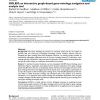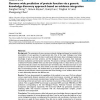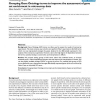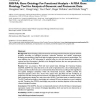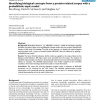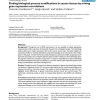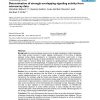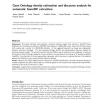BMCBI
2006
13 years 11 months ago
2006
Background: The Gene Ontology has become an extremely useful tool for the analysis of genomic data and structuring of biological knowledge. Several excellent software tools for na...
BMCBI
2006
13 years 11 months ago
2006
Background: The automation of many common molecular biology techniques has resulted in the accumulation of vast quantities of experimental data. One of the major challenges now fa...
BMCBI
2006
13 years 11 months ago
2006
Background: Common fragile sites (cfs) are specific regions in the human genome that are particularly prone to genomic instability under conditions of replicative stress. Several ...
BMCBI
2006
13 years 11 months ago
2006
Background: Gene Ontology (GO) terms are often used to assess the results of microarray experiments. The most common way to do this is to perform Fisher's exact tests to find...
BMCBI
2006
13 years 11 months ago
2006
Background: Gene Ontology (GO) characterizes and categorizes the functions of genes and their products according to biological processes, molecular functions and cellular componen...
BMCBI
2006
13 years 11 months ago
2006
Background: Biomedical literature, e.g., MEDLINE, contains a wealth of knowledge regarding functions of proteins. Major recurring biological concepts within such text corpora repr...
BMCBI
2006
13 years 11 months ago
2006
Background: Vast progress in sequencing projects has called for annotation on a large scale. A Number of methods have been developed to address this challenging task. These method...
BMCBI
2006
13 years 11 months ago
2006
Background: Through the use of DNA microarrays it is now possible to obtain quantitative measurements of the expression of thousands of genes from a biological sample. This techno...
BMCBI
2006
13 years 11 months ago
2006
Background: As numerous diseases involve errors in signal transduction, modern therapeutics often target proteins involved in cellular signaling. Interpretation of the activity of...
BMCBI
2008
13 years 11 months ago
2008
Background: This paper describes and evaluates a sentence selection engine that extracts a GeneRiF (Gene Reference into Functions) as defined in ENTREZ-Gene based on a MEDLINE rec...
